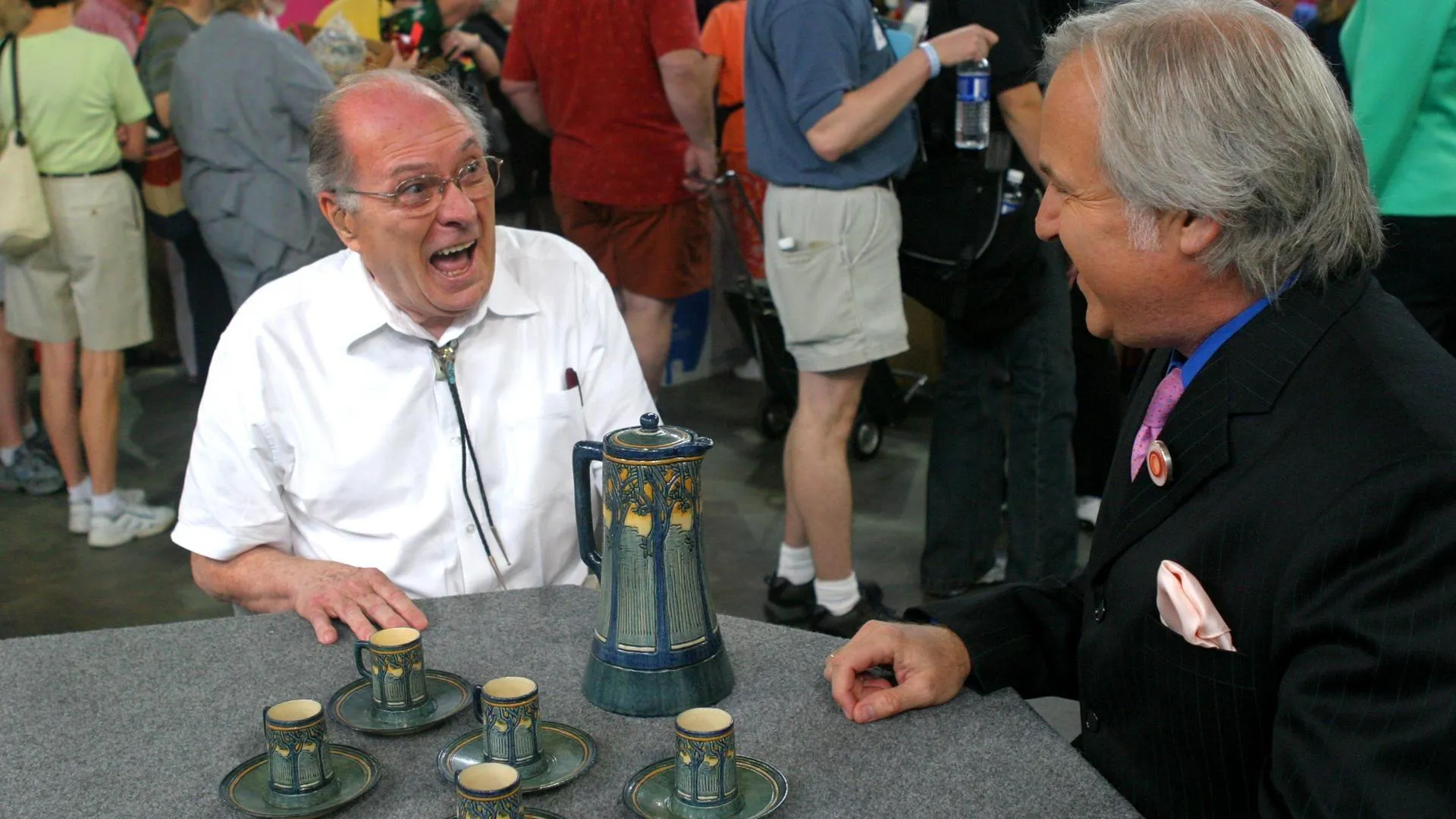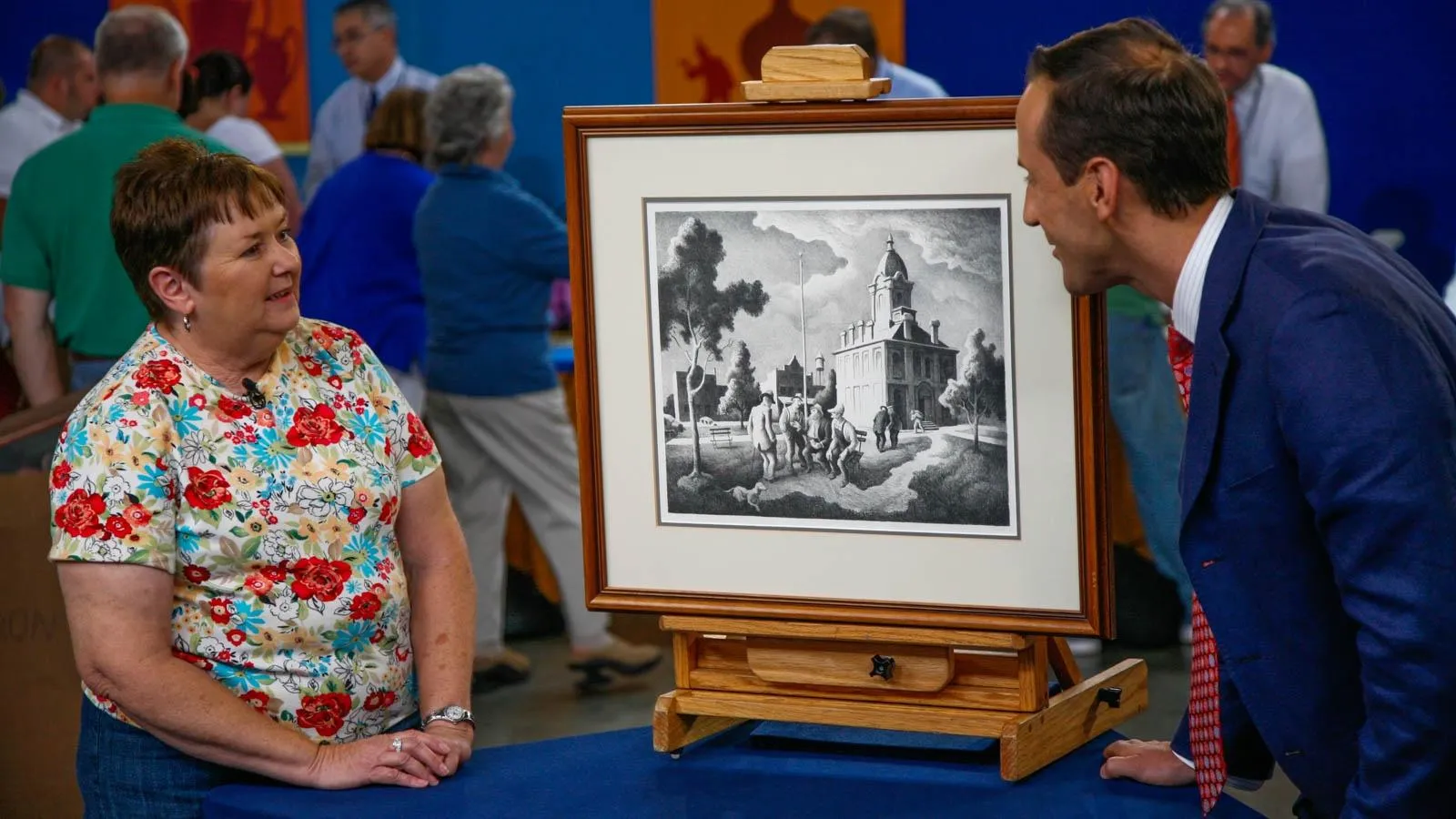GUEST: This box was given to me by a dear friend and mentor in Houston, Texas. And she didn't have any family, so she had some treasures that she gave to people that she loved. And she's since passed on, so it's very special to me.
APPRAISER: Now, you had said that you just considered it what, just a...
GUEST: A, a box, a pear box.
APPRAISER: A pear box.
GUEST: It's, it's what I've always called it, a pear box.
APPRAISER: Okay. Actually, what it is is, it's a tea caddy.
GUEST: (inhales): It is!
APPRAISER: And this would have been made in England in the early part of the 19th century. Made about 1800, 1810. It would be called a Regency tea caddy. And they made it in the shape of a pear, and they made other tea caddies in the form of other fruit. You find apple-form tea caddies, in particular. Given that it's shaped like a pear, what do you think it's made of?
GUEST: Pear wood?
APPRAISER: That's a very good guess.
GUEST: (laughs)
APPRAISER: And that's exactly right. And we just call them fruitwood. And this is a particularly good example. It has a lock in the front. Tea was extremely valuable during this time period. So, if you had this set up on a sideboard, you didn't want anybody coming in and sort of going, "Well, I think I'll help myself to a couple of spoonfuls of tea here." And they were terrific form-- nice, whimsical, fun form...
GUEST: Uh-huh.
APPRAISER: ...that people had. We have, also, some problems with it. It's not perfect.
GUEST: Right.
APPRAISER: And in fact, the first thing I'm going to point out is right here. Now, that is called a finial.
GUEST: Mm-hmm.
APPRAISER: And if you were staring at a pear, would you expect to see an acorn on top?
GUEST: No. (laughs)
APPRAISER: You would expect to see a little stem.
GUEST: Right.
APPRAISER: Well, chances are, at some point during its life, it's had its finial changed. So, it has a replacement there. We can take the top off. We have a broken hinge at the back here.
GUEST: Right.
APPRAISER: And on the bottom and to the side, we have these splits that go through the wood. And this is caused by the wood shrinking and pulling apart over time, but that's a good indication of age. I'll tell you, on one of the positive sides is, it has very good color, and the color's a nice go, almost like a golden pear. And actually, it looks like it might have had traces of some red stain here, but it's been so long...
GUEST: Uh-huh.
APPRAISER: ...since it's been gone, that it really, it's acquired just a wonderful natural color after that. Also, what they all have, all the real ones-- and they're making fake ones today-- they all have this funny little plug in the bottom. That is something that all the old ones have that the new ones do not. So, if anybody out there is ever looking to see...
GUEST: Uh-huh.
APPRAISER: ...if they have an authentic one, look for that plug. Any idea as to value?
GUEST: Well, I thought if it was worth $80 or $100, I'd be thrilled.
APPRAISER: Well, at auction, how does $3,000 strike you?
GUEST: (laughs) (inhales deeply) Wow. (laughs): I'm in shock.
APPRAISER: I knew you'd like that one. Yeah, yeah, yeah.
GUEST: I love it, love it, yes!












